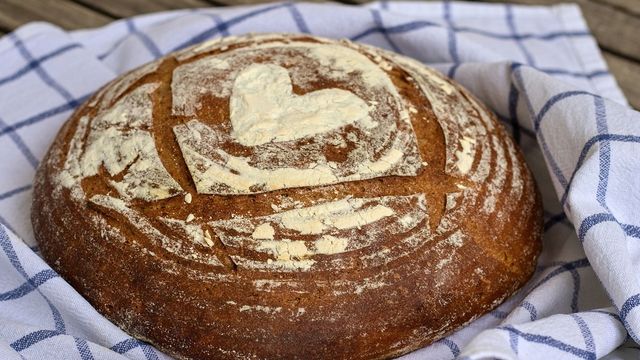Sourdough bread is known for its unique flavor, and new research has identified the compounds responsible for its taste.
Sourdough bread has gained popularity during lockdown as people turned to baking at home. One of the reasons why sourdough stands out is its distinct tangy flavor. Researchers presented their findings at the American Chemical Society Fall 2023 conference, shedding light on what makes sourdough taste so good.
The key to sourdough’s flavor lies in its starter, which contains wild yeast and microbes. These microorganisms consume the carbohydrates in the flour and produce carbon dioxide, causing the bread to rise. Previous research has shown that there are over 50 types of lactic acid bacteria and more than 20 species of yeast that can thrive in sourdough starters.
The composition of the starter can vary depending on the location and environmental factors. For example, San Francisco is renowned for its sourdough, with some bakeries using the same starters for over 170 years. The foggy climate of the city was once believed to contribute to the unique flavor, but it was later discovered that the specific bacterium thought to be exclusive to San Francisco, Lactobacillus sanfranciscensis, is actually found worldwide.
The taste of sourdough can be influenced by various factors, including fermentation time, temperature, flour type, and the microbes present in the starter. To identify the compounds responsible for sourdough’s unique flavor, researchers used a technique called sensomics. This method combines data from chromatography, mass spectrometry, and other techniques to isolate and quantify key molecules in food.
The research team identified 11 odorants and 10 tastants that contribute to the flavor of sourdough. These compounds were confirmed to match the smell and taste of sourdough bread by a human sensory panel. Key tastants in sourdough include salt, acetic acid, and lactic acid. While salt is added by the baker, acetic and lactic acids are byproducts of fermentation.
Comparing the concentrations of these compounds in sourdough with yeast-based breads made with rye or wheat flour, the researchers found that yeast-based breads had significantly lower levels of lactic and acetic acids. This confirms the importance of the fermentation process in developing the distinct flavor of sourdough.
The findings of this research can benefit bakers by helping them control the quality and consistency of their sourdough loaves. It can also assist in optimizing the amount of salt added to the bread. By understanding the key taste and aroma compounds in sourdough, bakers can create the best possible products.
In conclusion, the unique flavor of sourdough bread comes from the combination of wild yeast, microbes, and the fermentation process. The compounds responsible for its taste have been identified through sensomics, providing valuable insights for bakers seeking to perfect their sourdough recipes.









